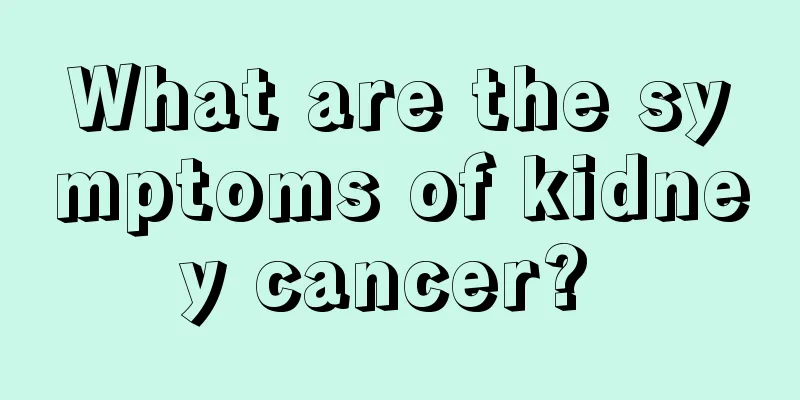Acute gastroenteritis

|
As summer approaches, the weather becomes hotter and hotter. The high temperature in summer causes the reproduction rate of many pathogenic microorganisms to accelerate as the temperature rises, so summer is a peak period for bacterial diseases. Generally speaking, the common symptoms of acute gastroenteritis in summer, such as vomiting, diarrhea, and abdominal pain, are caused by pathogenic microorganisms invading the stomach and intestines. In the summer, we need to pay special attention to our dietary health. Yes, because the temperature in summer is relatively hot, pathogenic microorganisms reproduce quickly, so if the food we eat is not preserved, it is easy to cause the breeding of viruses. If we eat the food that has bred viruses, we will suffer from acute gastroenteritis. What is acute gastroenteritis? Let's take a brief look at it below. Mild diarrhea caused by acute gastroenteritis is generally in good condition, with less than 10 bowel movements a day, which are yellow or yellow-green in color, with a small amount of mucus or white soap blocks, and not much feces. Sometimes the stool is "egg drop soup-like". Acute gastroenteritis can also cause severe diarrhea, with bowel movements several to dozens of times a day. Large amounts of watery stools, small amounts of mucus, nausea and vomiting, loss of appetite, and sometimes vomiting of coffee-like substances. If hypokalemia occurs, there may be abdominal distension and symptoms of systemic poisoning; such as irregular low or high fever, irritability and then lack of energy, blurred consciousness, and even coma. We should actively treat acute gastroenteritis. The treatment methods are as follows: 1. General treatment Rest in bed as much as possible. If the condition is mild, take glucose-electrolyte solution orally to replenish the loss of body fluids. If vomiting persists or dehydration is obvious, intravenous supplementation of 5%-10% glucose saline and other relevant electrolytes is required. Encourage intake of light liquids or semi-liquid foods to prevent dehydration or treat mild dehydration. 2. Symptomatic treatment If necessary, antiemetics and antispasmodics can be injected, such as belladonna, 3 times a day. Antidiarrheal drugs: such as Smecta, 2 to 3 times a day. 3. Antimicrobial treatment The role of antibiotics in the treatment of this disease is controversial. For infectious diarrhea, targeted antibiotics can be appropriately selected. But we should prevent abuse The above are the main symptoms of acute gastroenteritis and the main methods of treating acute gastroenteritis. From the above we can see that acute gastroenteritis is a disease that may be serious or mild. Because we need to treat it in the early stages of the disease, don’t just think that this is just a simple diarrhea. If not treated in time, it may cause dehydration or even shock. What causes painful urination? Urinating is a normal physiological phenomenon of ours. It is mainly the process of urine produced by the kidneys being temporarily stored in the bladder and excreted from the body after a certain amount has been stored. The process of urination needs to go through multiple organs and ducts. If there is a problem in any aspect of this process, we will have symptoms of difficulty urinating. Of course, there are many diseases that cause difficulty in urination. Let us learn about them below. Diseases such as prostatitis and prostatic hyperplasia can cause dysuria, but in addition to causing dysuria, they can also cause pain during urination. Of course, causing urinary pain is also a way of causing dysuria. Below, let us take a brief look at urinary pain. Dysuria refers to pain in the urethra, bladder, and perineum during urination. The pain can be mild or severe, often feeling like a burning pain, and in severe cases it can feel like a knife cutting. Painful urination is common in urethritis, prostatitis, prostatic hyperplasia, seminal vesiculitis, cystitis, urinary tract stones, bladder tuberculosis, pyelonephritis, etc. The characteristics of urinary pain can help to clarify the diagnosis of the disease. ⑴ If there is obvious pain at the beginning of urination or combined with dysuria, the lesion is mostly in the urethra, which is common in acute urethritis. (2) Pain at the end of urination and urgency are common in patients with acute cystitis. ⑶ If there is obvious pain at the end of urination, the pain is still felt after urination, or there is a feeling of "empty pain", or the pain is felt even without urination, the lesions are mostly in the urethra or adjacent organs, such as bladder trigone inflammation, prostatitis, etc. ⑷Sudden interruption of urination accompanied by pain or urinary retention: seen in bladder, urethral stones or foreign bodies in the urinary tract. ⑸ Difficult urination accompanied by distension and pain: This often indicates prostate hyperplasia in elderly men and can also be seen in urethral stones. ⑹Stinging or burning pain during urination: more common in acute inflammatory stimulation, such as acute urethritis, cystitis, prostatitis, and pyelonephritis. The above are the main causes of urinary pain. From the above we can see that there are actually many types of urinary pain. Different diseases cause different types of urinary pain. So when we have urinary pain, we need to distinguish what kind of pain it is. Of course, painful urination is a symptom of a disease. If we experience painful urination, we need to go to the hospital for examination and treatment in time. |
Recommend
My eyes hurt from wearing my new glasses
Why do my eyes hurt when I wear new glasses? In l...
What is the function of the pelvic floor muscles?
There are many reasons that can cause damage to t...
Why is the IQ so low
People's IQs are different. Some people are b...
What are the dietary treatments for gallbladder cancer
Gallbladder cancer has caused many people to lose...
What to eat if you have small cell lung cancer
What should I eat for small cell lung cancer? The...
Constipation after diarrhea
Many people will experience constipation after ex...
What causes yellow nasal discharge and yellow phlegm
Yellow snot and yellow phlegm are actually quite ...
What to do if you drink gasoline
Gasoline is a fuel. At present, most cars still n...
Don’t break into the 7 self-righteous new “calcium” reading red lights
In the long journey of life, bone health and calc...
What to do if the tattoo area is itchy
With the development of society, people's ide...
If you have small pimples on your head, you can treat them like this
Many people find that they grow small bumps on th...
The 8 main culprits of excessive heavy metals
1. Seafood 2. Certain Chinese medicines Cinnabar ...
The harm of liver cancer to the human body
Liver cancer is also a major cancer disease, and ...
Is motion sickness hereditary?
Motion sickness is the imbalance of body regulatio...
What is the cure rate of bladder cancer
When we say someone is "cured" of a dis...









